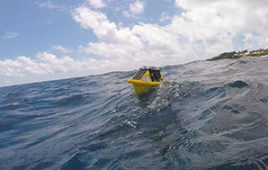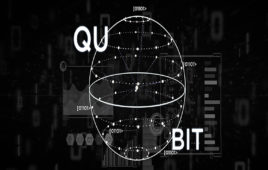 This year’s International Supercomputing Conference, (ISC’14) in Leipzig, Germany, is now just one month away. iSGTW speaks to Niko Neufeld ahead of his talk at the event, ‘The Boson in the Haystack,’ which will take place during the session on ‘Emerging Trends for Big Data in HPC’ on Wednesday, June 25.
This year’s International Supercomputing Conference, (ISC’14) in Leipzig, Germany, is now just one month away. iSGTW speaks to Niko Neufeld ahead of his talk at the event, ‘The Boson in the Haystack,’ which will take place during the session on ‘Emerging Trends for Big Data in HPC’ on Wednesday, June 25.
Neufeld co-designed the data-acquisition system of the LHCb detector, which is one of the four large experimentson the Large Hadron Collider (LHC) at CERN, near Geneva, Switzerland. The ‘b’ in LHCb stands for ‘beauty,’ which is a sub-variety of a type of particles known as quarks. By studying the beauty quarks thrown out by particle collisions within the LHC, researchers at the LHCb experiment are able to investigate the slight differences that exist between matter and antimatter.
Niko, how did you first become involved with scientific computing?
I originally studied physics, since I was very interested in understanding how matter works at the most fundamental level. Once I came to CERN, my role involved a lot of computing and I gradually became more and more exposed to the technical aspects of the work done at the laboratory, particularly the data acquisition. Of course, I’d already done a lot of computing-related work as a student and was keen to pick this up again as I was always what you might today call a geek — I played and experimented a lot with computers when I was younger.
What exactly does your current role with the LHCb experiment entail?
I’m mainly responsible for the upgrade of LHCb’s online computing system. That means all of the computing infrastructure that is related to transporting data from the detector, filtering it, temporarily storing it, and then sending it to mass storage. My job essentially ends once the data has left our experimental facility.
What’s the appeal of ISC’14 for you personally? What are your main reasons for wanting to attend this conference?
The ISC events are always a good opportunity to find out about upcoming trends in the community and make new contacts. There are plenty of opportunities to talk to both people from IT companies and from other research domains. At this year’s event, I plan to focus mostly on accelerators, but I’m also keen to find out more about developments in new, upcoming server technologies. In my view, even if speakers make their talks available online, you can’t beat actually being there: there’s great value in attending in person.
Andrew Purcell is the editor of iSGTW and is based at CERN, near Geneva. This article originally appeared in iSGTW on May 21, 2014. Read the full article: Handling big data to understand antimatter at CERN’s LHCb experiment




